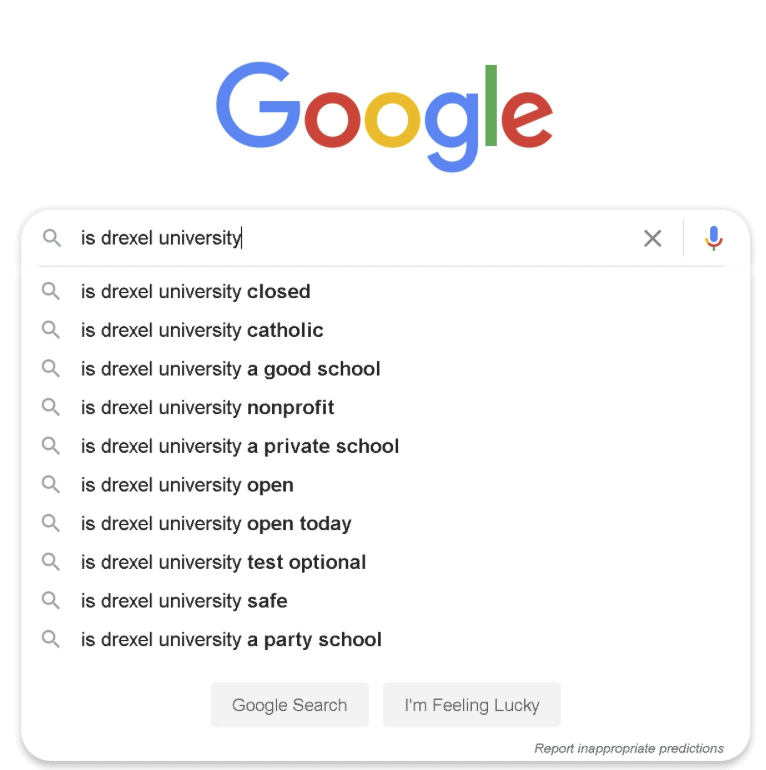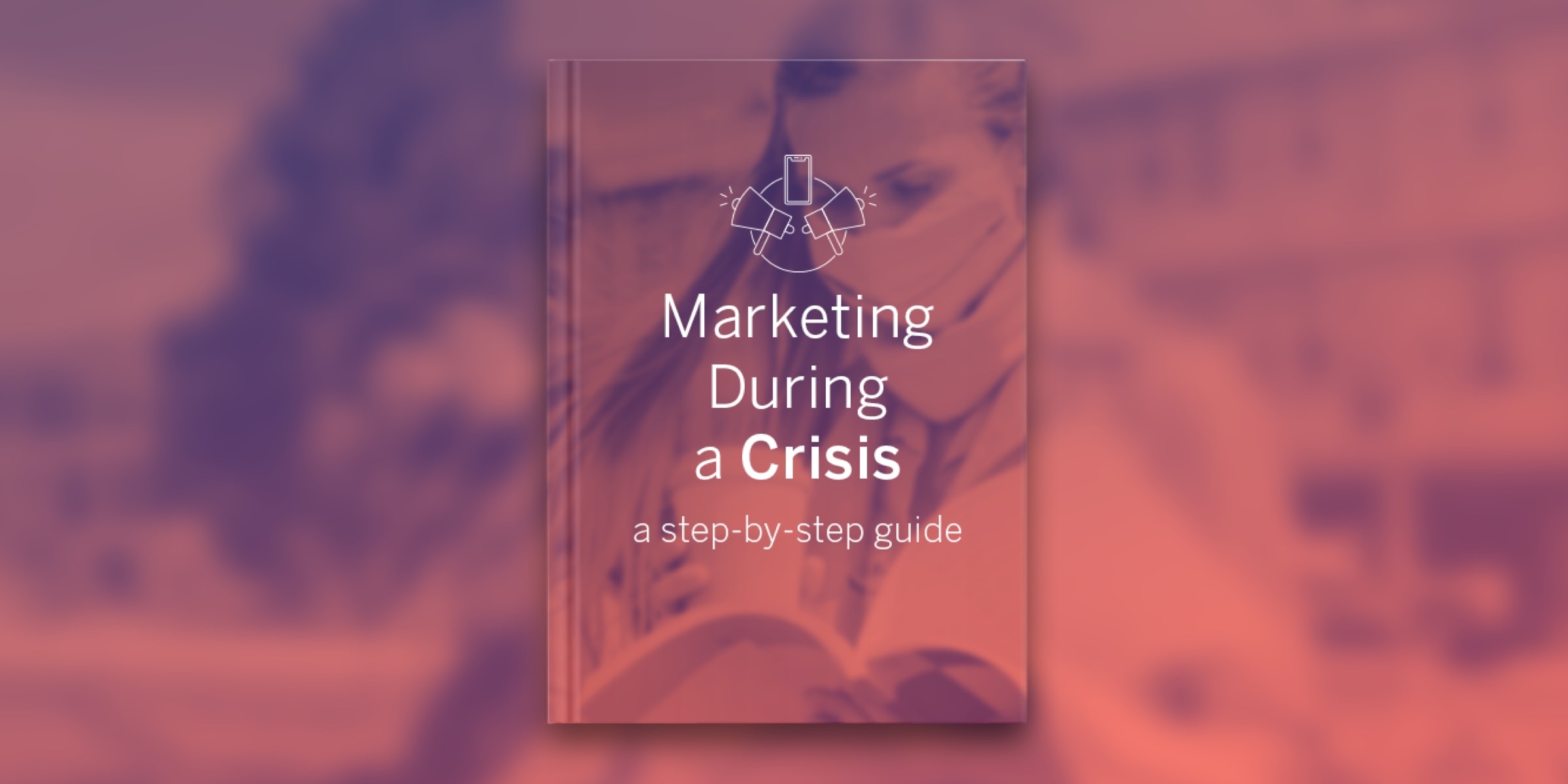As higher-ed marketers, what on earth are we supposed to do right now? I can’t think of a time in recent memory where so much change has happened so quickly. If you haven’t already, this is definitely a time to hit pause on any communications you had scheduled back in the fall and re-evaluate what you’re putting out into the world.
So, as you’re thinking about how you’re going to reach prospective and current students, parents, alumni, and donors, here are my thoughts to make sure your marketing ecosystem hits the mark.
Remember Who You Are
First and foremost, your brand should be rooted in deep truths that make your school unique and unlike anyone else. You may call them your brand pillars, your brand promise, or a unique selling proposition. But whatever you call them, you should be leaning into them heavily right now.
For example, if part of your brand is “We confront the world’s problems” (like, say, NYU), this is a fantastic opportunity to show the world how you put that promise into action:
“Read the room” has become a mantra within digital marketing circles lately, and for good reason: People are concerned about their health, their finances, systemic inequality — and that’s just what we know about today. Students are worried that committing to classes this year at a pricey four-year school may not be that different from taking a class on Coursera. Yes, they may miss out on the formative experiences that only campus life can bring once (if) campuses are able to stay open, but it’s a steep wager some students aren’t willing to make. It goes without saying that you need to answer people’s questions about safety, deadlines, and announcements. But just as important, any message you put out into the world needs to be sensitive to that context. Campaigns that are too “Marketing-y”, or donor appeals that don’t consider that, are going to be ignored, or worse, provoke angry responses.
Coming up with content for higher ed brand social media accounts is such a struggle right now. The reality is that we need to prioritize content around safety education (masks, physical distancing) and answers to thousands of questions. Everything else can wait. #casesmc #hesm
— Tony Dobies (@DOBIEST) June 15, 2020
That said, reading the room doesn’t mean everything needs to be doom and gloom. There is room for levity. You can’t pretend that there isn’t a crisis happening, but you also need to be yourself. As much as people are craving information, they’re also desperate for a distraction. Cat memes and oddly satisfying power washing videos can scratch that itch while strengthening the bond with your audience.
Good luck with final exams, @MITstudents. The cat wizard is with you. pic.twitter.com/bKePqWivGM
— Massachusetts Institute of Technology (MIT) (@MIT) May 15, 2020
Gotta clean up that Script Ohio a bit. ?
?: @lainsterrr (TikTok) pic.twitter.com/ipFy9TtQFk
— Ohio State (@OhioState) May 20, 2020
Audit Your Website Content
Regular content audits should be a part of any marketing team’s governance plan. Even if you’ve done one recently, you should look again – the world has happened in numerous ways in the last few months, and content and messaging that seemed on point in January may seem disconnected or out of step now.
With deadlines and campus move-in dates in flux, review content for accuracy and consistency across all your channels. And with cultural attitudes progressing quickly, ensure that your content is culturally sensitive and appropriate for the national conversations that are taking place.
If you’re looking for a framework to use for your content audit, our Content Scorecard is a great place to start.
Audit Your Marketing Channels
As with your website content, you need to look at where you can optimize your marketing channels:
Social Media:
First, let’s acknowledge that this is not an easy time to be a social media manager. Your social team is on the front lines of communication with cultural fires raging seemingly everywhere. Crisis communication can be frustrating and stressful, and when it’s sustained for months at a time it can make an already difficult job emotionally exhausting.
As mentioned, you should be publishing content aligned with your brand pillars and answering key questions. But it’s just as important to use your channels to listen to others. Social listening tools can not only alert you when people have questions about your school, but also identify influencers that can be engaged to help you build brand trust or more specific goals, identify opportunities to jump into broader conversations, or learn how students are approaching the college search process. You can gain key insights around not only your own school, but view discussions around your competitors or other key topics you want to own.
Students’ questions and comments will provide you with key insights into the type of content you should be addressing in your other channels and will ultimately give you a much more honest view into how prospects are really feeling.
Universities:
What your students are saying about you on Twitter, Reddit, Insta, etc impacts your enrollment FAR more than anything you are saying about yourself on Facebook.
You need to be listening.
— Jon-Stephen Stansel (@jsstansel) June 9, 2020
Paid Campaigns
If you’re running paid search and social campaigns, here are some things to consider:
- Re-run your performance reports:
Consumer behavior has changed drastically. The campaigns that outperformed last year (or even a few weeks ago) may not be hitting the right notes now. It’s time to reassess and cut your underperforming campaigns.
- Adjust your bidding strategies:
With many brands making significant cuts to their paid campaigns, the keyword terms that were once out of your price range may be worth exploring now. Ask your agency or your internal marketing team for an update on key terms and targeting and pricing criteria.
- Update your messaging:
Make sure that all campaign messaging is appropriate for where we are today (are you noticing a trend yet?). All those old ads pushing for a campus tour may not be the best idea right now.
Organic / SEO:
If you’ve already used social listening to understand the key questions students have, you should have a decent starting point on an updated top-of-funnel content strategy for your website. There are several reports in Google Analytics that can help give you insight into your audiences’ intent.
- Site Search Report:
Google does not provide much information at all about organic keywords that bring users to your website — you’ll have to buy ads for that information. But your internal site search can provide a lot of information about what your visitors are looking for. You can then use this information to inform your future content planning and where that content is promoted.
To find this report in Google Analytics, go to Behavior > Site Search
Looking at the pages where these searches happened can provide even further insight into what information should be added to your existing web pages.
For more on how search impacts prospective students, this incredibly in-depth report on site search for higher education from our higher education marketing publication Volt is full of valuable information.
- Landing Pages from Organic Search:
Finding which pages users tend to come from search engines can help you reverse engineer your top organic search terms. In addition, you’ll see which pages have a strong search authority and use those same tactics for other pages.
- Google Search Recommendations:
Google search recommendations will show you the most common branded search terms and questions. Try phrasing your search in different ways to see all the variations. Having pages that address these topics gives you the opportunity to provide your own answers and explanations rather than having users find answers on other platforms.

Email:
The COVID-19 outbreak has people staying at home, and they are opening and engaging with emails at unprecedented rates. If you’re using automated workflows, double-check that the information is still accurate and contextually appropriate. After that, there is ample opportunity to grow and nurture your audience with emails that augment and reinforce the information on pages they’ve shown interest in. This functionality is included in most email marketing platforms and can be very powerful when implemented correctly.
Video:
Of all the marketing channels impacted by COVID-19, video has seen perhaps the biggest growth of all. For instance, the number of users watching live streams on Facebook Live has increased 50% since January.
Your school can capitalize on this trend by setting up live chats with professors or administrators to make the communications as tailored and high-touch as possible.
Virtual tours have been around for a while, and if you haven’t already invested in one, you are probably already kicking yourself, but there are also ways to move forward. There are plenty of virtual tour software providers that can get these up and running fairly quickly. Otherwise, well-done videos that show not just the campus and buildings, but the magic of being on campus with your peers can help students see themselves there (if not this fall, eventually.)
What’s Next?
While this is definitely a strange time to be marketing to prospective students, this will pass and students will want to come back to campus again. Use all the extra time you have (ha!) to prepare that messaging for when we are allowed to stand next to each other again.
Conclusion
In the meantime, keep the conversation open with your audience. Now is not the time to go silent. Use this time to get closer to your users and their questions and concerns. What you learn will continue to be valuable well after your dorms and classrooms are full again.



